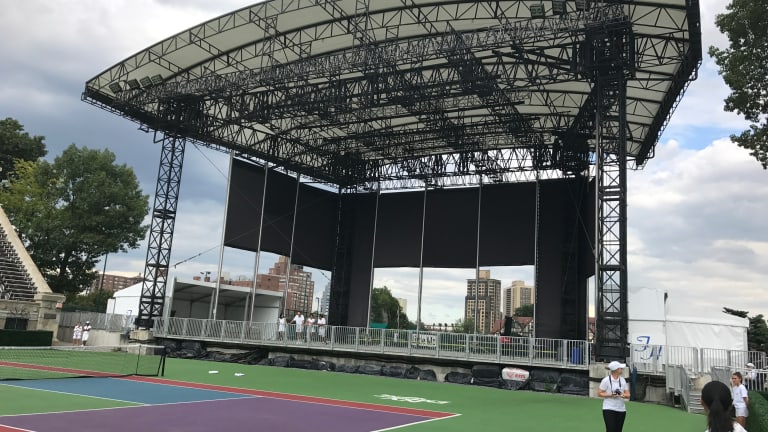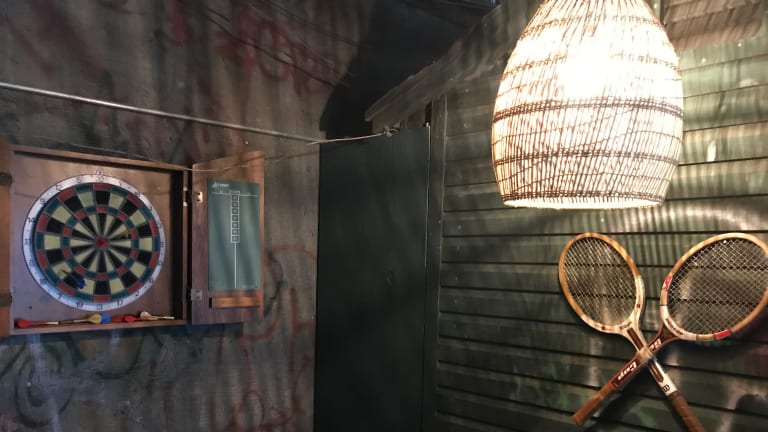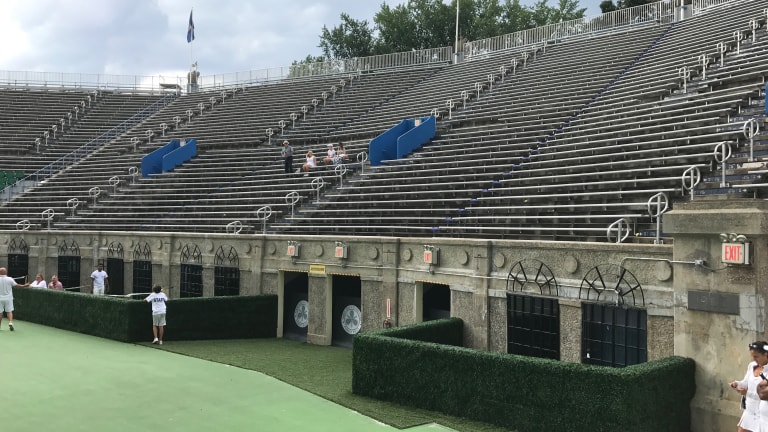Written by Michael Steinberger; photos, videos and captions by Ed McGrogan
Forty years ago this summer, the US Open was held for the last time at the West Side Tennis Club in Forest Hills, Queens. It went out with a bang—literally.
During a night match between Eddie Dibbs and an 18-year-old local kid who had just made a run to the semifinals at Wimbledon, John McEnroe, a spectator was shot in the leg, the bullet apparently fired from a nearby apartment complex. Between the citywide blackout and the Son of Sam killer, it had been a summer of mayhem in New York, and the 1977 Open was not spared. In addition to the gunfire, the tournament was marred by racial and transgender controversies, boorish on-court behavior, unruly fans and an uproar over a newfangled racket—with so-called spaghetti strings—that would soon be banned because of all the crazy spin it generated.
Five years ago, I wrote an article looking back at the raucous ’77 Open. As part of my reporting, I paid a visit to the West Side Tennis Club. The famed Tudor clubhouse was as stately as ever, but the club was struggling. It had an aging membership and had experienced financial difficulties. The stadium, scene of so many historic matches, was in total disrepair and looked like a Roman ruin. Two years earlier, club members had narrowly rejected a proposal to sell the stadium to a developer who wanted to replace it with condos. But the outlook for the stadium and for the club seemed bleak.





